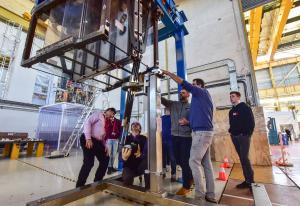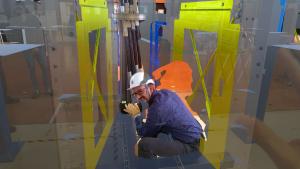Zero-gravity in a cramped place
The volume of the tokamak pit may be huge, but so are the components that need to be installed. As a result, assembly operators will have very little room to manoeuvre. One tool is under development that will aid in the assembly—in a crowded environment—of the steel elements that interlink the massive toroidal field coil cases at top and bottom.
The assembly of ITER's steel vacuum vessel will be one of the most technically challenging operations of the machine assembly phase. One by one, nine vacuum vessel "sub-assemblies"—weighing 1,200 tonnes each, will be lowered by crane onto temporary supports in the tokamak pit. These sub-assemblies, created on massive tools in the Assembly Hall, associate one vacuum vessel sector, its associated thermal shield panels, and two vertical toroidal field coils.
"CEA, and specifically the Institute for Magnetic Fusion Research (IRFM) here in Cadarache, has the engineering know-how and the 'tokamak culture' that was indispensable to developing this assembly tool," explains Bertrand Peluso, the MIFI technical coordinator on CEA side.



